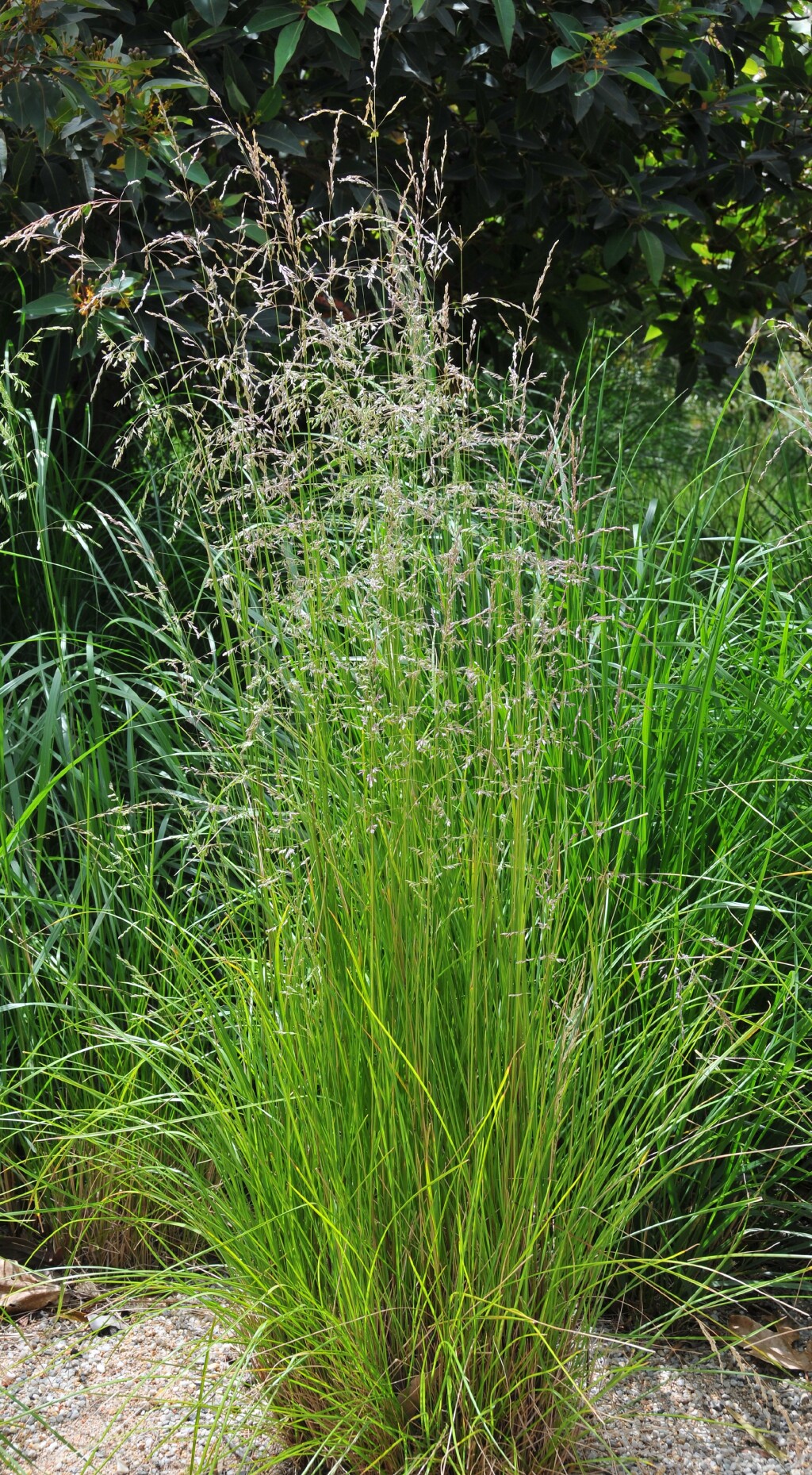Poa ensiformis
VickeryRobust, loosely tufted perennial, usually developing lateral rhizomes, culms erect, sometimes compressed below the panicle, to 120 cm high. Leaves finely to coarsely scabrous, rarely smooth; sheath purplish, glabrous, smooth or scabrous; blade flat to somewhat folded, rarely loosely inrolled when fresh, to 40 cm long and to 5(–10) mm wide, glabrous, variably scabrous, sometimes the lower surface smooth; ligule truncate, firmly membranous, 0.5–2 mm long. Inflorescence an open pyramidal panicle, to 30 cm long and 18 cm wide, mostly more than 12 cm long. Spikelets 3–8-flowered, 5–10 mm long, green or purplish; glumes 3-nerved, sub-equal, 2.5–4 mm long, usually scabrous along nerves; lemma 5-nerved, 3–5 mm long, with fine hairs along the keel and lateral nerves in the lower half, otherwise glabrous or with very short hairs on the internerves near the base; web usually well-developed, at least on the lower lemmas. Flowers mainly Oct.–Mar.
Wim, VVP, VRiv, GipP, OtP, WaP, Gold, CVU, GGr, DunT, NIS, EGL, EGU, HSF, HNF, OtR, Strz, MonT, HFE, VAlp. Also NSW. A common grass of mountain forests from Kinglake eastward to the NSW border (e.g. Lake Mountain, Baw Baws, Strzelecki Range, Jamieson, Ensay area, Nunniong and Errinundra Plateaus), mostly between 600 and 1000 m altitude, but occasionally extending above the snowline as at Mts Buller and Hotham and at Falls Creek, with an isolated occurrence in the Grampians in the west, and at low altitudes by the Yarra River near Burnley and near Sydenham Inlet.
Walsh, N.G. (1994). Poaceae. In: Walsh, N.G.; Entwisle, T.J., Flora of Victoria Vol. 2, Ferns and Allied Plants, Conifers and Monocotyledons, pp. 356–627. Inkata Press, Melbourne.
 Spinning
Spinning

